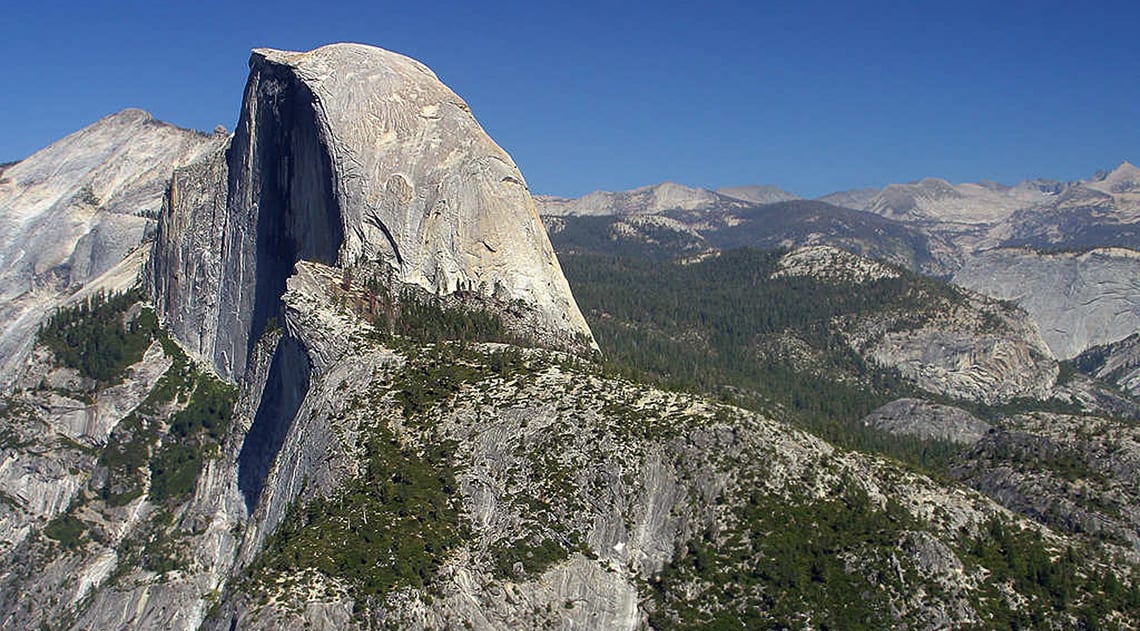America has 58 national parks, so where does an explorer even begin? Well, four of the most famous are Yellowstone, Grand Canyon, Yosemite and Death Valley, and with a little extra digging you’ll see why.
Yellowstone
Starting us off, we have the world’s first national park, Yellowstone, with its thankfully dormant super volcano which last erupted some 630,000 years ago. However, eruptions do occur from other park residents, as Yellowstone is home to America’s greatest concentration of geysers, with Old Faithful the most popular to blow its top. Mostly in Wyoming but dipping into parts of Idaho and Montana, the park boasts 10,000 thermal features in total as well as mountains, forests and lakes. This wildlife haven is also inhabited by 60 mammal species and you may well see bears, wolves, bison, elk and antelope on your visit.
All this sounds great, but what about accommodation? After all, despite wanting to be close to nature, you may be hoping for a bit more than a tent. Aman hotels are celebrated globally for their luxury and uniqueness, and there’s no shying away from it here. Choices at Amangani range from expansive suites to full homes, while further exploration of the area is offered through its year-round activities including skiing, mountain biking and fishing.
Grand Canyon
When you think of America’s natural landscape the Grand Canyon is most likely part of your vision, but how much do we really know about it? For starters, this park is huge, almost 2,000 square miles of dramatic wilderness. You’ll find every kind of environment here, from cool fir forests to hot dry deserts. Exploration wise, most visitors start with the South Rim because it offers a real diversity of sites and scenic viewpoints, but few track over to the North Rim and even fewer descend into the canyon itself. So, to experience the Grand Canyon fully you need to move beyond what the majority of visitors do – staring down from the first lookout point into the canyon itself and then ticking it off their bucket list.
For every 1,000 feet you descend into the canyon you gain 3-5 degrees Fahrenheit, so by the time you’re at the Colorado River’s edge the temperature can be 15-25 degrees warmer than on the South Rim. You leave the forests of the South Rim to be greeted by a more desert-like landscape filled with Cacti and black brush. Your senses become attuned to hear the lizards scrambling across rocks, the dripping of springs and the sound of wrens. From down below to up in the air, another great way to discover the area is by helicopter and there are plenty of tours available. A rather more wild way to explore is via a raft down the river. Stare up from here or down from the skies and you may just spot a bird of prey such as a Californian Condor, one of the rarest birds in the world and one of the largest in America.
Yosemite
In the heart of California’s rugged Sierra Nevada sits the 1,200 square mile Yosemite National Park. From soaring cliffs and giant waterfalls to enormous trees and tranquil meadows, the park is a haven of diversity. In fact, Yosemite Falls is the tallest waterfall in America, but the icon of this park may yet await you. You may have already experienced Bridalvail Falls, El Capitan, Cathedral Rock, Cathedral Spires, Centinel Rock, Centinel Falls and Yosemite Falls but you don’t want to leave this place until you’ve viewed it from the 5,000 foot summit of Half Dome. The spectacular hike up this mighty rock is akin to a natural staircase, taking in waterfalls and stunning nature as it winds upwards towards the clouds.
Alongside hikers, the park is home to horses, bikers and hang gliders as well as painters and climbers. There’s a full programme of activities for you to enjoy here, from ranger walks that explore bears, geology and trees, to starry night prowls. During the holidays, there are special activities for children as well as places to stay, eat and meet. A great place to stay while here is the Ahwahnee hotel, it’s literally a National Historical Landmark and one of America’s most distinctive resort hotels.
Death Valley
Sprawling 3.5 million acres over south-eastern California, Death Valley is the largest national park in the continental United States. In fact, it’s the lowest, driest and hottest area in America. Near the border of California and Nevada in the Great Basin, east of the Sierra Nevada Mountains, it’s the home of the Timbisha tribe of Native Americans who’ve been in the area for at least the past millennium. One of the things that sets Death Valley apart is that you can explore so much of it by road, and one of the most amazing destinations is Zabriskie Point, part of Amargosa Range in the east of the valley, with its dynamic array of colours, shapes and textures – it is absolutely stunning! Death Valley is obviously the perfect place for a ranch and Furnace Creek Inn & Ranch Resort is possibly the most uniquely situated hotel in the USA. The Ranch's surrounding landscape features the lowest point in the Western hemisphere, approximately 214 feet below sea level along with sculptured sand dunes and the Panamint Mountain Range, peaking at 11,500 feet and there’s also the opportunity to explore the valley on horseback.
Whether you pick one park or them all, you can be assured of a breath-taking experience that can hardly be put into words. It’s an ageless America, one that must be explored to understand just why this country is so special and why its diverse landscapes should continue to be protected for generations to come.





